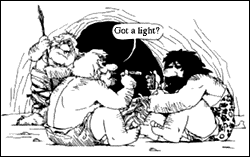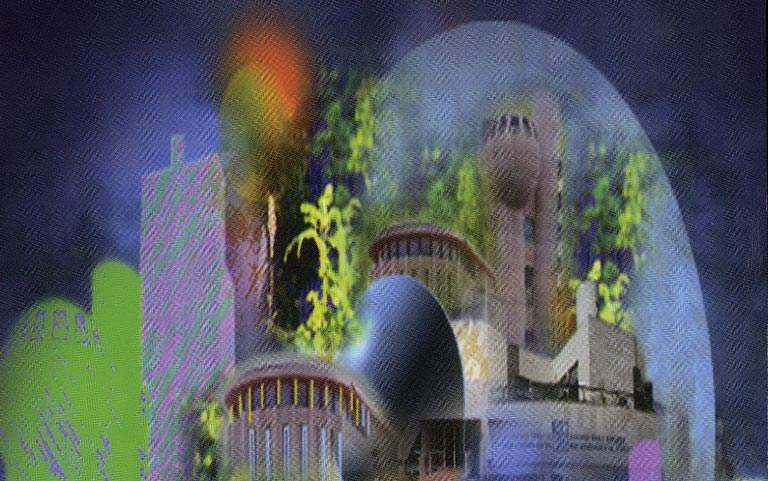Massada Artifacts dated by the Institute's carbon-14 lab have yielded evidence to support the account of mass suicide in the fortress; analysis of the Roman rampart used in the storming of Massada showed that the climate at that time was more conducive to agriculture than it is now, helping to explain how the Jewish fighters there managed to sustain themselves.
Preservation of the Dead Sea Scrolls was improved by the Institute's X-ray analysis of the parchments to determine the optimal conditions for guarding and displaying these national treasures at the Israel Museum in Jerusalem.
The Kebara and Hayonim Caves on Mount Carmel and the Western Galilee respectively were investigated with a Weizmann innovation, a portable infrared spectrometry laboratory that provides important insights into the life style of the sites' prehistoric inhabitants.
Natural Scientists Tackle Archaeology
Earth, ashes and fire
The use of fire by early human beings was an important milestone in our evolution but it is difficult to identify evidence of fire because original ashes are not often preserved. Most of the minerals in ashes are unstable and over the years they undergo various chemical reactions until they are altered beyond recognition.
Weizmann Institute scientists noted that although about 98 percent of fresh ash is composed of a very unstable mineral called calcite, the remaining 2 percent is far more stable. This fraction therefore has a much better chance of being preserved. Its presence could thus testify to the existence of ashes and the use of fire.
This approach, developed during archaeological research in Israel, is also being used to identify ancient ashes elsewhere in the world, including at the Zhoukoudian cave site near Beijing in China. The remains of Peking Man (Homo erectus), who lived 250,000 - 500,000 years ago, were discovered in this cave. Chinese researchers and others believe that this early man was one of the first to domesticate fire, but until now it had been impossible to prove. Now Weizmann Institute researchers, the first western scientists permitted to work and investigate at the Chinese site in the last 60 years, are investigating whether this theory is accurate.























